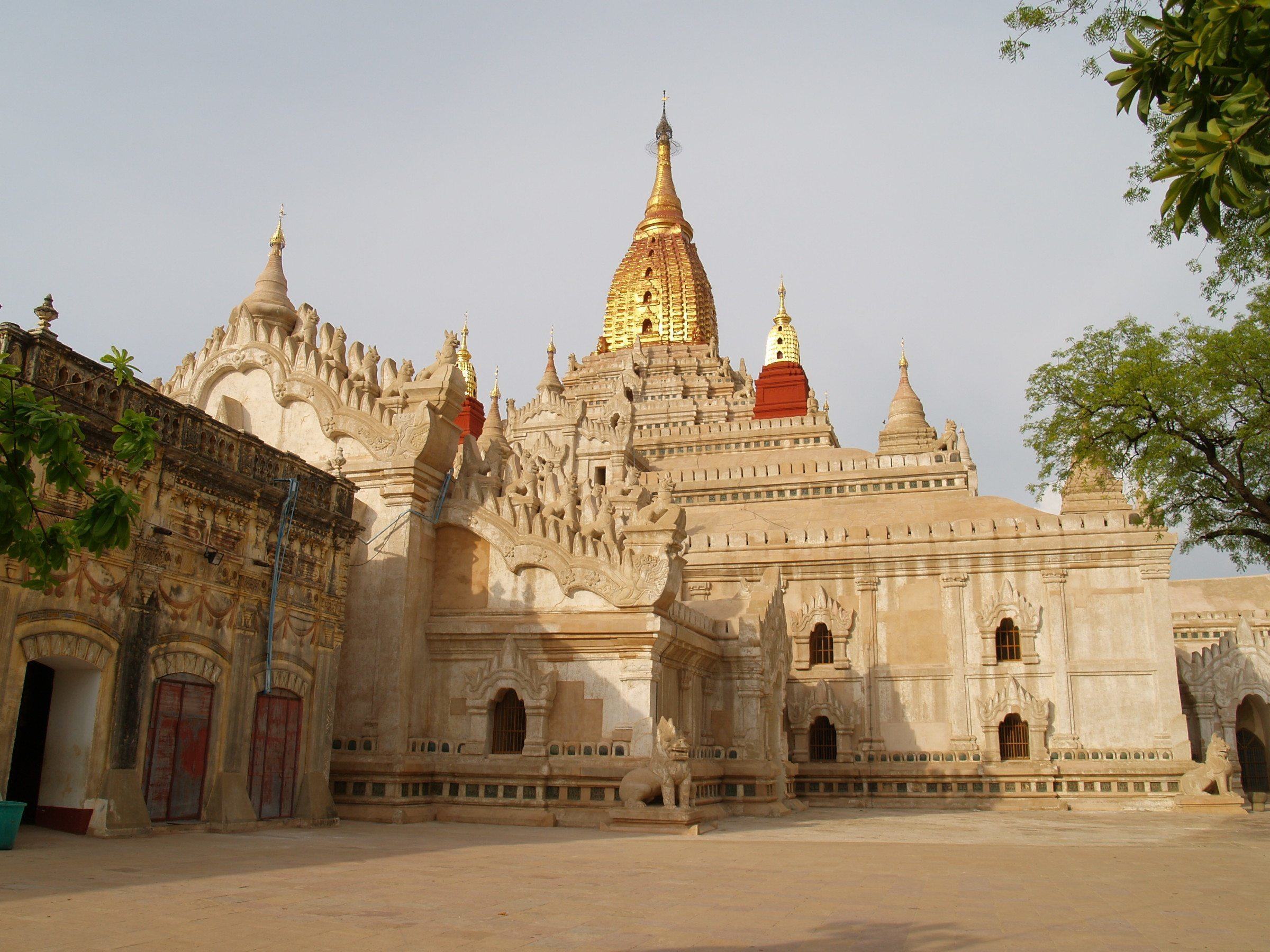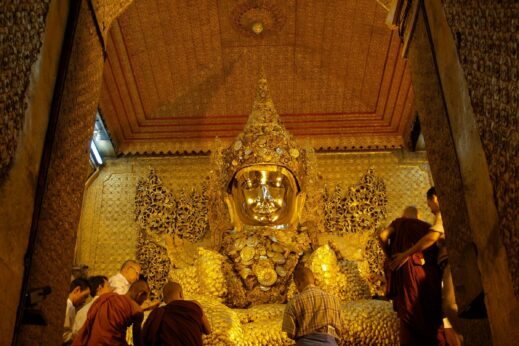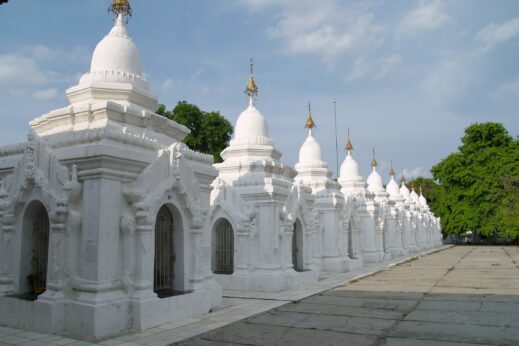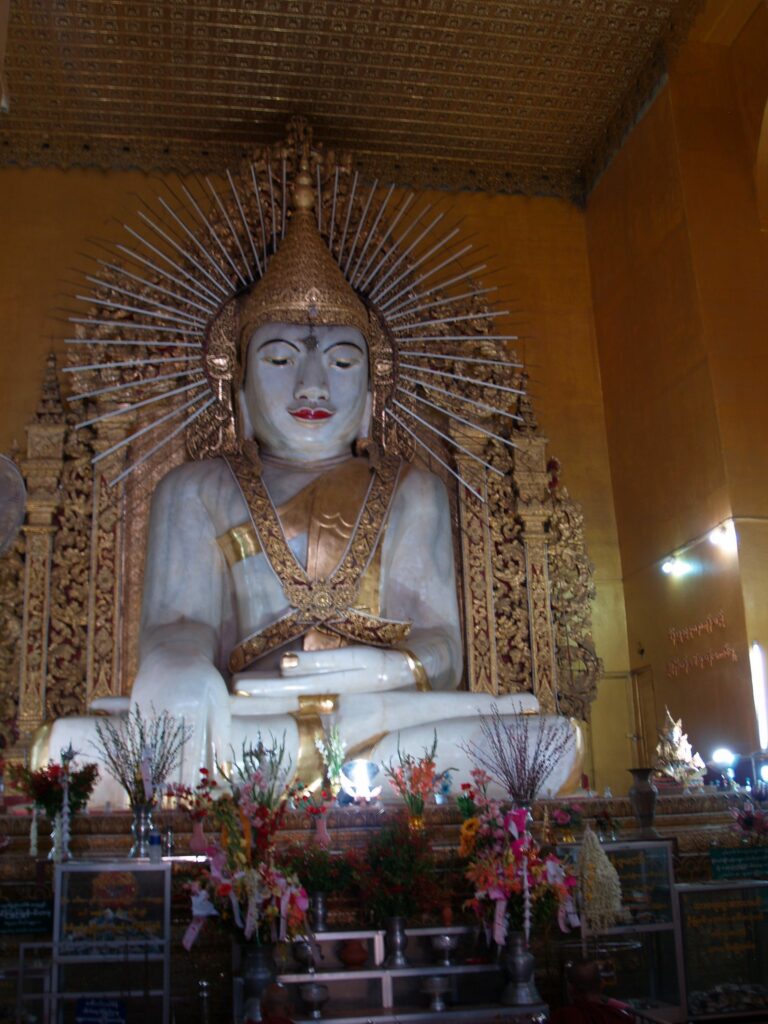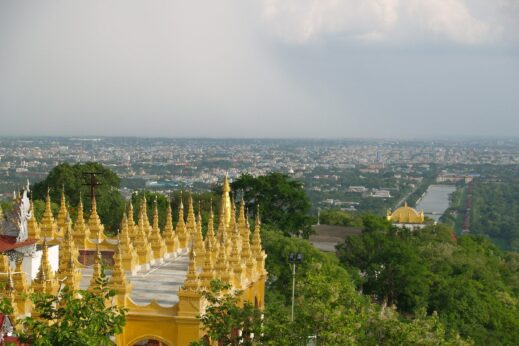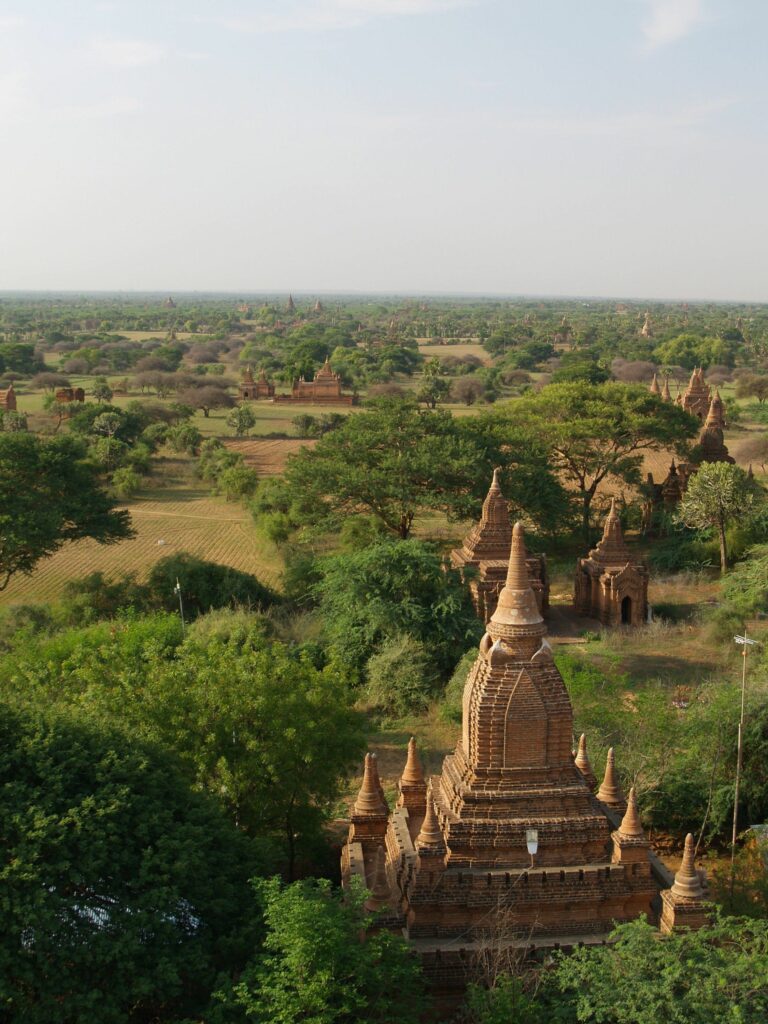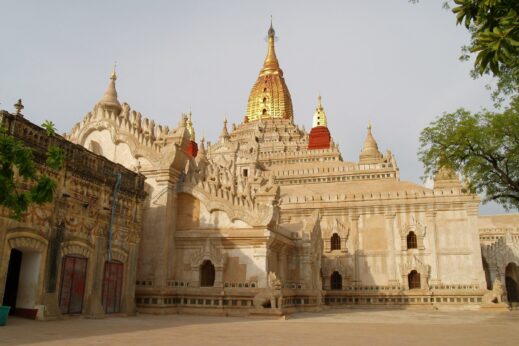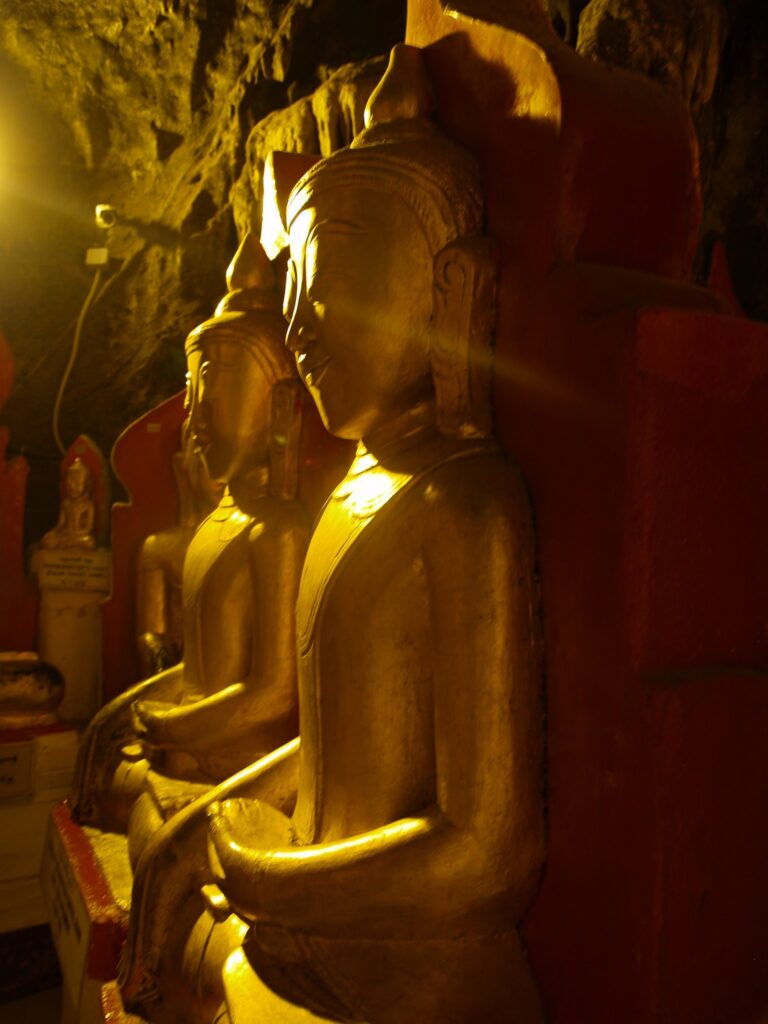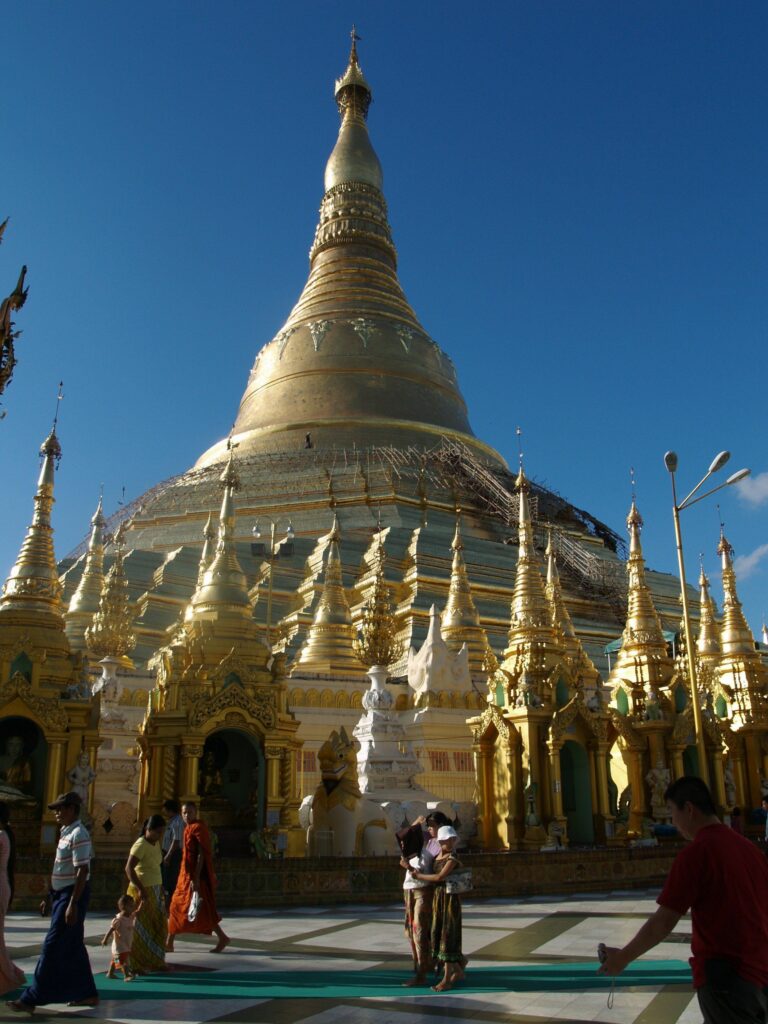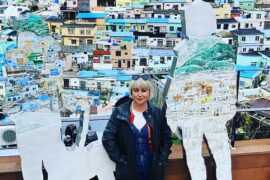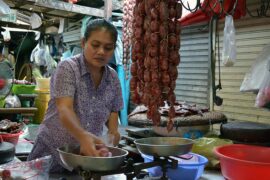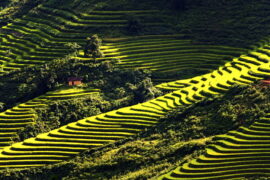It’s impossible to travel in Burma without visiting at least a few Buddhist pagodas and they are spottable almost every way you turn! But which ones are worth a visit? This handy guide will help you decide which ones to add to your itinerary so that you don’t end your time in Burma totally pagoda-ed out!
First of all, what is a pagoda? The population of Burma is 89% Theravada Buddhist and pagodas are Buddhist temples, typically in the form of a many tiered tower. When visiting a pagoda, it is important to have your shoulders and knees covered and to maintain a respectful attitude. Shoes should be removed but the soles of your feet should never face a statue of the Buddha. This means if you decide to sit down, make sure to kneel with your feet tucked under you. Anyway, here is my selection…
Mahamuni Pagoda, Mandalay
The Mahamuni Pagoda in Mandalay is home to one of the country’s most revered Buddha images which, over the years, has been covered with gold leaf, giving it an almost lumpy texture. It is an important pilgrimage site for the Burmese as this Buddha is believed to be alive. A xylophone is played at 4AM to wake the Buddha up when he has his face washed and teeth brushed by a senior monk. By 4PM, the xylophone is played again to send the Buddha to sleep, signifying closing for the day. Only men are allowed into the inner sanctum where the Buddha resides, but the statue can be seen by women from prayer areas slightly further away. Away from the central building bronze Khmer statues can be found, believed to have healing powers if you rub the body part on the statue associated with your ailment.
Kuthodaw Pagoda, Mandalay
The Kuthodaw Pagoda is affectionately known as the world’s largest book. The area consists of a golden stupa in the centre of a courtyard surrounded on all sides by 729 smaller kyauksa gu (literally stone inscription caves but actually more like small stupas) each with a marble slab inscribed with teachings of the Buddha. Together they make up the entire Canon of Theravada Buddhism. The language used on the tablets is a language only monks learn to understand – although general members of the public will be able to read the slabs, only those on the path of enlightenment will have learnt the meaning behind the words, similar to us reading a foreign language that uses Latin script.
Kayuktawgyi Pagoda, Mandalay
Located at the foot of Mandalay Hill, Kayuktawgyi Pagoda is home to an 8 metre tall marble Buddha, carved from a single piece of marble and weighing in at over 900 tonnes. The size of the statue is fairly spectacular in itself but if you visit in October, you may be lucky enough to catch the festival here, held over several days and arranged according to the lunar calendar. The festival is a mix of Buddhist ceremonies and carnival attractions and the neon lights and lively atmosphere makes it a totally different pagoda experience.
Mandalay Hill, Mandalay
Mandalay Hill as a pagoda is nothing to write home about. Out of the 700+ pagodas in Mandalay it is distinctly average. However Mandalay Hill as a viewpoint is spectacular! With views of the city extending out to the river and with the right aspect for sunset, this is a photo opportunity to add to all itineraries. You’ll find young monks and university students visiting this viewpoint with the aim to practice their English on tourists and you’ll often end up having very interesting conversations if you are patient enough with them translating different parts for each other.
Bagan
Bagan is pretty much nothing but pagodas! In fact, the plains of Bagan are both the largest and densest area of Buddhist temples and ruins in the world! It is estimated that there were once as many as 13,000 buildings here but a more modest 2,200 remain today. Temples are now in various states of disrepair and restoration and some date back to the 9th Century. A visit to Bagan is pretty impressive and a must for anyone heading to the country.
Shwezigon Pagoda, Bagan
There are many temples worth visiting in Bagan, but a particular stand out is the Shwezigon Pagoda. It is considered the religious heart of Bagan and many pilgrims flock to this beautiful temple. The temple was built by King Anawratha after his sacred white elephant, when carrying relics of the Buddha, kneeled on this spot. After his rule, the building became the prototype for all Bagan’s temples. The temple has 4 large Buddha statues, one of which is very unique as the facial expression changes depending on where you stand.
Pindaya Caves, Pindaya
Although not a pagoda, the Pindaya Caves are well worth exploring. These caves set high on the hillside in Pindaya consists of a many chambered cave filled with over 8,000 Buddha statues and the number is growing every day! The caves form an impressive display of iconography with most of the statues being donated by members of the public and companies from around the world, resulting in a mish-mash of styles, decorations and sizes. If you look closely enough while wondering through the Buddha ‘maze’, you may even find some of the earlier 18th Century statues. While the small temple in the entrance still has the air of a religious site, once you wonder deeper into the caves it has more of the feel of a curiosity shop – definitely worth a look if you find ‘regular’ religious sites mundane.
Shwedagon Pagoda, Yangon
The Shewdagon Pagoda is by far the most famed and most photographed pagoda in Burma, and with good reason! Although the origins of the pagoda are unclear, the local legend states that the original structure was built 2500 years ago then renovated several times until taking its current shape in the 15th century. The 8 sided central stupa is 99 metres tall and is guilded with gold leaf, surrounded by 64 smaller stupas .Unlike some of the other solely Buddhist religious sites, Shwedagon also has spiritual meaning to the locals and it is as much a Burmese pilgrimage site as it is a tourist attraction.
The pagoda has a very laid back feel, with locals coming here to meet up with friends and family for picnics, young adults join the voluntary cleaning societies in the hopes of finding love and monks relaxing during breaks in their lessons. The pagoda easily takes a few hours to explore and can be done with or without a guide – an informative English language map is included with the entry fee. Take time to read the information and you will find out about the quirks of this temple, down to the recommendation to use the binoculars to see the 76 karat diamond (and various other jewels) adoring the top. Don’t be surprised if Burmese visitors try and subtly (or not so subtly!) take photos with you, especially if you are blonde and fair skinned – see it as an opportunity to exchange for a photo of them!
Sule Pagoda
Now incongruously serving as a traffic roundabout, Sule Pagoda is a 46 metre tall octagonal pagoda which, according to local legend, was built 2000 years ago to house a strand of the Buddha’s hair. The pagoda is still a functioning monument if you can get to it through the traffic and, surprisingly enough, the galleries are an oasis of calm if you are interested in going inside, although the main attraction is definitely the traffic spinning round the walls.
Regardless of which ones you choose to visit, the pagodas of Burma are without a doubt one of the highlights of a visit, whether your tastes tend towards the historical, the traditional or the downright quirky!
